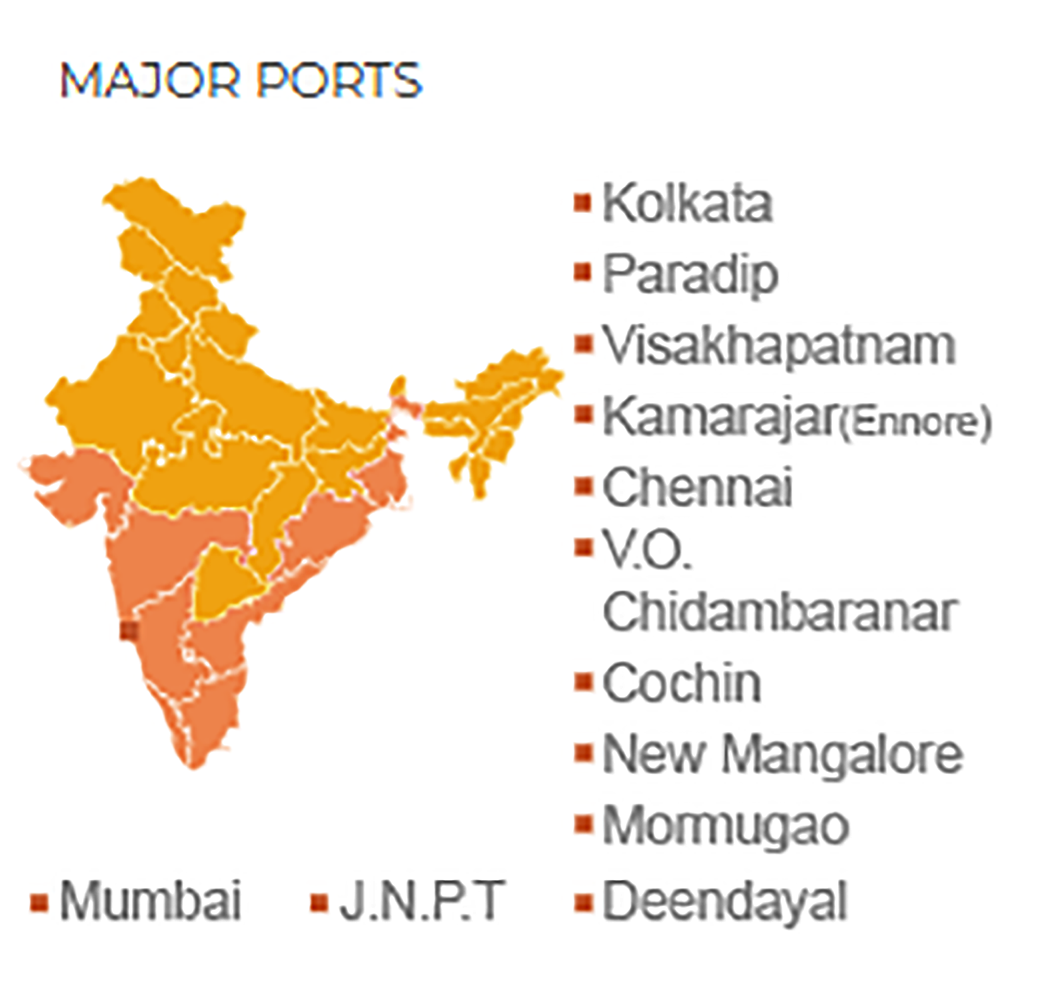Tariff Guidelines for the PPP Projects in Major Ports | 27 Dec 2021
For Prelims: Major Ports in India, Major Ports vs Minor Ports.
For Mains: Major Port Authority Act, 2021, Deregulation of tariffs, PPP Projects at Major Ports.
Why in News
The Ministry for Ports, Shipping & Waterways has announced the new Tariff Guidelines, 2021 for the Public-Private Partnership (PPP) projects in Major Ports.
- The new guidelines have been released in consonance of Major Port Authority Act, 2021.
Key Points
- New Guidelines:
- Existing Scenario: The PPP concessionaires at Major Ports were constrained to operate under the stipulations of guidelines (by Tariff Authority for Major Ports (TAMP)).
- On the other hand, private operators/PPP concessionaires at non-major ports were free to charge tariffs as per market conditions.
- Concessionaire can be a person or company that has the right to sell a product or to run a business in PPP projects.
- TAMP stands abolished according to the Major Port Authority Act, 2021.
- Transition to Market-linked Tariffs: Currently, major port's PPP concessionaires handle around 50% of the total traffic handled by all the major ports in India.
- The new guidelines allow the concessionaires at major ports to set tariffs as per market dynamics.
- Existing Scenario: The PPP concessionaires at Major Ports were constrained to operate under the stipulations of guidelines (by Tariff Authority for Major Ports (TAMP)).
- Significance of these Guidelines:
- The biggest benefit of transition to market linked tariff is that a level playing field will be provided to the PPP concessionaires at Major Ports to compete with private ports.
- This is a major reform initiative as the Government moves towards deregulation of tariffs for PPP Projects at Major Ports.
- The guidelines will usher in a new era of market economy and make Major Ports more competitive.
- Major Port Authority Act, 2021:
- In February 2021, Parliament passed the Major Port Authorities Bill, 2020, which seeks to provide greater autonomy and flexibility to major ports in the country and professionalise their governance.
- Objectives:
- Decentralization: It has granted port authority the power to fix tariffs, which will serve as a reference tariff for purposes of bidding for PPP projects.
- Trade and Commerce: To promote the expansion of port infrastructure and facilitate trade and commerce.
- Decision Making: It imparts faster and transparent decision making benefiting the stakeholders and better project execution capability.
- Reorienting Models: Reorienting the governance model in central ports to landlord port model in line with the successful global practice.
- In the Landlord Port Model, ports own the land and basic infrastructure, with operations and management being leased out to private players.
Public-Private Partnership (PPP) Projects
- Public-private partnerships involve collaboration between a government agency and a private-sector company that can be used to finance, build, and operate projects, such as public transportation networks, parks, and convention centers.
- Financing a project through a public-private partnership can allow a project to be completed sooner or make it a possibility in the first place.
- Different Models of PPP: Commonly adopted model of PPPs include Build-Operate-Transfer (BOT), Build-Own-Operate (BOO), Build-Operate-Lease-Transfer (BOLT), Design-Build-Operate-Transfer (DBFOT), Lease-Develop-Operate (LDO), Operate-Maintain-Transfer (OMT), etc.
- These models are different on level of investment, ownership control, risk sharing, technical collaboration, duration, financing etc.
Major Ports in India
- Legal Provisions: Major Ports are under the Union list of the Indian Constitution and are administered under the Indian Ports Act 1908 and the Major Port Trust Act, 1963.
- Number of Major Ports: There are 12 major ports and 200 non-major ports (minor ports) in the country.
- Major ports includes Deendayal (erstwhile Kandla), Mumbai, JNPT, Marmugao, New Mangalore, Cochin, Chennai, Kamarajar (earlier Ennore), V O Chidambaranar, Visakhapatnam, Paradip and Kolkata (including Haldia).
- Major Ports vs Minor Ports: Ports in India are classified as Major and Minor Ports according to the jurisdiction of the Central and State government as defined under the Indian Ports Act, 1908.
- The Major Ports are owned and managed by the Central Government.
- The Minor ports are owned and managed by the State Governments.
- Administration of Major Ports: Each major port is governed by a Board of Trustees appointed by the Government of India.
- The Trusts operate on the basis of policy directives and orders from the Government of India.
- PPP Projects in Ports: PPPs in the ports sector in India have been witnessed in the operations and management of ports, and construction of deep water ports, container terminals, shipping yards and bulk ports.

